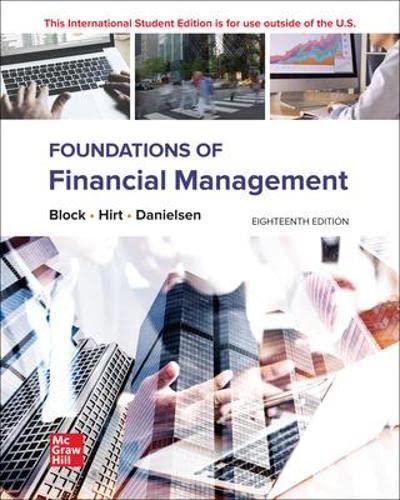CALIFORNIA PIZZA KITCHEN This case examines the question of financial leverage at California Pizza Kitchen (CPK) in July 2007. With a highly profitable business and an aversion to debt, CPK management is considering a debt-financed stock buyback program. The case is intended to provide an introduction to the Modigliani-Miller capital structure irrelevance propositions and the concept of debt tax shields. 1. Summarize CPK's recent (2007) operating performance and business. How is it doing? Why is the firm considering a recapitalization? (Note: this is not the focus, 1 want you to provide a foundation of how the firm is doing to discuss its recapitalization alternatives.) 2. How does debt add value to CPK? a. What role does leverage play in affecting the return on equity (ROE) for CPK? b. What about the cost of capital? In assessing the effect of leverage on the cost of capital, you may assume that a firm's CAPM beta can be modeled in the following manner: Bu = Bu[1 + (1 - T)D/E) where By is the firm's beta without leverage. T is the corporate income tax rate, D is the market value of debt, and is the market value of equity. 3. What is the anticipated CPK share price under each scenario? How many shares will CPK be likely to repurchase under each scenario? What role does the tax deductibility of interest play in encouraging debt financing at CPK? Answer this by completing the next page. 4. What is the case for not doing the recapitalization? 5. What capital structure policy would you recommend for CPK? Support your recommendation!!! Debt/Total Capital 10% 20% Actual 30% Interest rate Tax rate 6.16% 32.5% 6.16% 32.5% 6.16% 32.5% 6.16% 32.5% Earnings before income taxes and interest Interest expense Earnings before taxes Income taxes Net income 30,054 0 30,054 9.755 20.299 Book value: Debt Equity Total capital 0 225,888 225,888 Return equity 9.0% 0 643.773 643.773 Market value: Debt Equity Market value of capital Market value of Debt/MV of Capital Price per share Shares repurchased thousands) Shares outstanding thousands) Earnings per share Price to earning ratio $22.10 0 29.130 0.70 31.7 Bela Cost of equity WACC 0.85 9.396 9.594 CALIFORNIA PIZZA KITCHEN This case examines the question of financial leverage at California Pizza Kitchen (CPK) in July 2007. With a highly profitable business and an aversion to debt, CPK management is considering a debt-financed stock buyback program. The case is intended to provide an introduction to the Modigliani-Miller capital structure irrelevance propositions and the concept of debt tax shields. 1. Summarize CPK's recent (2007) operating performance and business. How is it doing? Why is the firm considering a recapitalization? (Note: this is not the focus, 1 want you to provide a foundation of how the firm is doing to discuss its recapitalization alternatives.) 2. How does debt add value to CPK? a. What role does leverage play in affecting the return on equity (ROE) for CPK? b. What about the cost of capital? In assessing the effect of leverage on the cost of capital, you may assume that a firm's CAPM beta can be modeled in the following manner: Bu = Bu[1 + (1 - T)D/E) where By is the firm's beta without leverage. T is the corporate income tax rate, D is the market value of debt, and is the market value of equity. 3. What is the anticipated CPK share price under each scenario? How many shares will CPK be likely to repurchase under each scenario? What role does the tax deductibility of interest play in encouraging debt financing at CPK? Answer this by completing the next page. 4. What is the case for not doing the recapitalization? 5. What capital structure policy would you recommend for CPK? Support your recommendation!!! Debt/Total Capital 10% 20% Actual 30% Interest rate Tax rate 6.16% 32.5% 6.16% 32.5% 6.16% 32.5% 6.16% 32.5% Earnings before income taxes and interest Interest expense Earnings before taxes Income taxes Net income 30,054 0 30,054 9.755 20.299 Book value: Debt Equity Total capital 0 225,888 225,888 Return equity 9.0% 0 643.773 643.773 Market value: Debt Equity Market value of capital Market value of Debt/MV of Capital Price per share Shares repurchased thousands) Shares outstanding thousands) Earnings per share Price to earning ratio $22.10 0 29.130 0.70 31.7 Bela Cost of equity WACC 0.85 9.396 9.594








